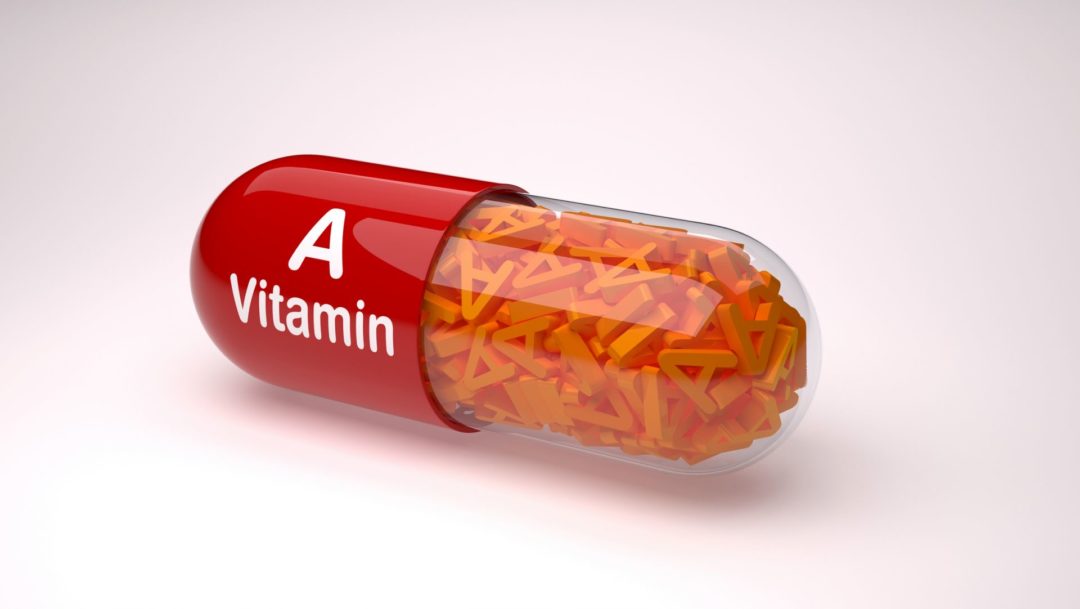www.wholefoodsmagazine.com/articles/5152-vitamin-a-shows-promise-as-potential-obesity-treatment

Vitamin A Shows Promise as Potential Obesity Treatment
October 23, 2020
Vienna, Austria—Cold ambient temperatures increase vitamin A levels in humans and mice, according to a new study published in Molecular Metabolism. The vitamin A helps convert white adipose tissue into brown adipose tissue, which, a press release notes, stimulates fat burning and heat generation.
There are two types of fatty depots in humans and other mammals, the press release explains: white and brown adipose tissue. Excess calories are mainly stored in white fat, a process seen during obesity development. Brown fat, on the other hand, burns energy and generates heat. More than 90% of the body fat depots in humans are white; this fat is often found at the abdomen and upper thighs. Converting white fat to brown could be a therapeutic option to combat weight gain and obesity.
A research group led by Florian Kiefer, Division of Endocrinology and Metabolism, Department of Medicine III, MedUni Vienna, demonstrated that the moderate application of cold increases the levels of vitamin A in humans and mice, the press release says. Most vitamin A reserves are stored in the liver, and cold exposure appears to stimulate the redistribution of vitamin A towards the adipose tissue, leading to a higher rate of fat burning.
"Our results show that vitamin A plays an important role in the function of adipose tissue and affects global energy metabolism. However, this is not an argument for consuming large amounts of vitamin A supplements if not prescribed, because it is critical that vitamin A is transported to the right cells at the right time," explained Kiefer in the press release. "We have discovered a new mechanism by which vitamin A regulates lipid combustion and heat generation in cold conditions. This could help us to develop new therapeutic interventions that exploit this specific mechanism."
There are two types of fatty depots in humans and other mammals, the press release explains: white and brown adipose tissue. Excess calories are mainly stored in white fat, a process seen during obesity development. Brown fat, on the other hand, burns energy and generates heat. More than 90% of the body fat depots in humans are white; this fat is often found at the abdomen and upper thighs. Converting white fat to brown could be a therapeutic option to combat weight gain and obesity.
A research group led by Florian Kiefer, Division of Endocrinology and Metabolism, Department of Medicine III, MedUni Vienna, demonstrated that the moderate application of cold increases the levels of vitamin A in humans and mice, the press release says. Most vitamin A reserves are stored in the liver, and cold exposure appears to stimulate the redistribution of vitamin A towards the adipose tissue, leading to a higher rate of fat burning.
Related: Study Supports Bergamot FF Weight Management Benefits CRN: Consumer Survey Reaffirms Consumer Confidence, Trust in the Industry Berg Nutrition Now Exclusive Distributor of Capsaicin Ingredient
When Kiefer and his team blocked the vitamin A transporter in mice via genetic manipulation, the cold-mediated rise in vitamin A and the conversion of white fat to brown were both blunted. The addition of vitamin A to human white fat cells, on the other hand, led to the expression of brown fat cell characteristics, with increased metabolic activity and energy consumption."Our results show that vitamin A plays an important role in the function of adipose tissue and affects global energy metabolism. However, this is not an argument for consuming large amounts of vitamin A supplements if not prescribed, because it is critical that vitamin A is transported to the right cells at the right time," explained Kiefer in the press release. "We have discovered a new mechanism by which vitamin A regulates lipid combustion and heat generation in cold conditions. This could help us to develop new therapeutic interventions that exploit this specific mechanism."

